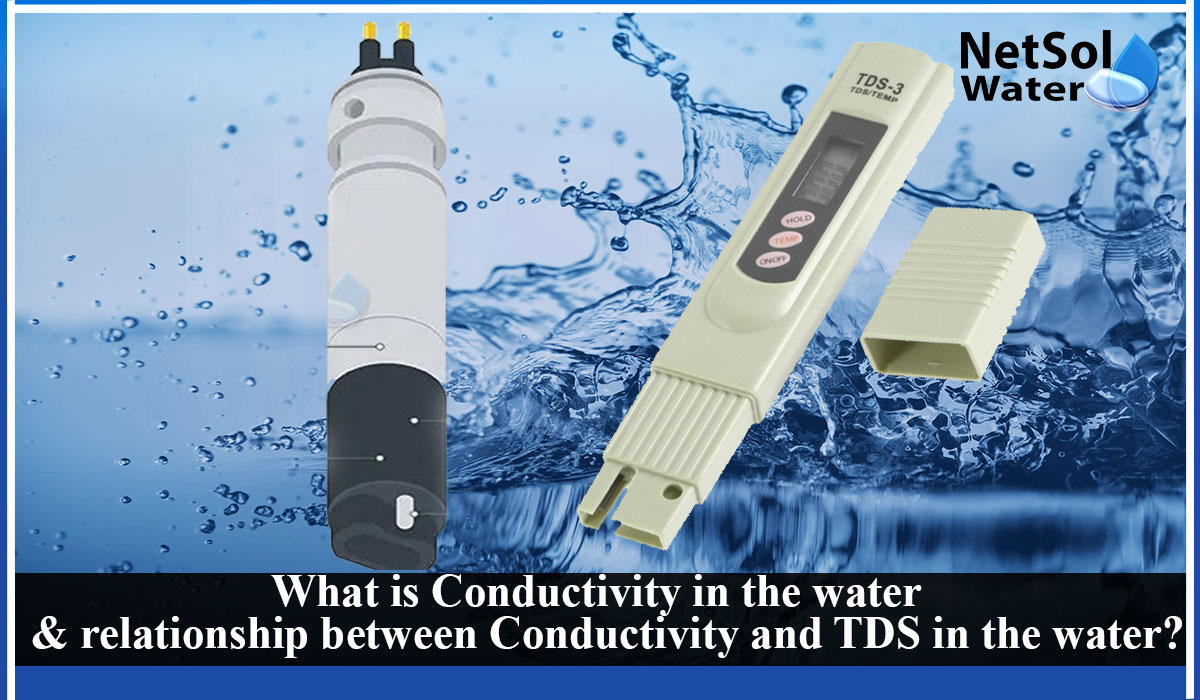What is Conductivity in the water and what is the relationship between Conductivity and TDS in the water?
Conductivity is an essential parameter used to measure the ability of water to conduct an electric current. It is an indirect measurement of the amount of dissolved solids in water.
Here, we will discuss conductivity in water and the relationship between conductivity and TDS (Total Dissolved Solids).
What is Conductivity in Water?
Conductivity is a measure of the ability of water to conduct an electric current. It is a result of the presence of charged ions in water. These ions are present due to the dissolution of salts and minerals in water. The more ions present, the higher the conductivity of water.
Conductivity is expressed in Siemens per meter (S/m) or microSiemens per centimeter (µS/cm). The unit of measurement is dependent on the type of electrode used for the measurement.
Relationship between Conductivity and TDS
TDS is the total concentration of dissolved solids in water. These solids can be either organic or inorganic. The measurement of TDS is usually expressed in milligrams per liter (mg/L) or parts per million (ppm).
Total Dissolved Solids, or TDS, is a measurement of all ions in solution. The ability of a solution to transmit current, or EC, is a measure of its ionic activity. TDS and EC are relatively comparable in diluted solutions.
The relationship between conductivity and TDS is linear. As the amount of dissolved solids increases in water, the conductivity also increases. This relationship is due to the presence of ions in water, which are responsible for the electrical conductivity.
The following equation can be used to determine the TDS of a water sample based on the measured EC value:
TDS (mg/l) = 0.5 x EC (dS/m or mmho/cm)
or = 0.5 * 1000 x EC (mS/cm) *
Also, the relationship between conductivity (σ) and TDS (mg/L) can be expressed mathematically using the following formula:
σ = k * TDS
Where k is a constant that depends on the temperature of water and the electrode used for the measurement.
An Example:
Lets take an example, if the conductivity of water is 1 mS/cm, and the temperature of water is 25°C, the TDS of water can be calculated as follows:
TDS = 0.5 * 1000 x EC (mS/cm)
TDS = 0.5*1000 x 1 ((mS/cm)
TDS = 500 mg/L
Importance of Conductivity and TDS in Water
Conductivity and TDS are essential parameters used to assess the quality of water. High levels of conductivity and TDS in water can indicate the presence of dissolved solids, which can affect the taste, odor, and color of water.
High levels of TDS in water can also cause scaling in pipes and fixtures, leading to reduced water flow and damage to the water distribution system. Additionally, high TDS levels can affect the performance of water treatment processes, leading to increased operating costs.
Low levels of conductivity and TDS in water can indicate the lack of essential minerals required for human health, such as calcium, magnesium, and potassium. However, excessively low levels can indicate the presence of other contaminants, such as heavy metals and organic compounds.
Permissible Limits of Conductivity and TDS in Drinking Water:
The permissible limits of conductivity and TDS in drinking water depend on the country or region. In the United States, the Environmental Protection Agency (EPA) has set a secondary standard for TDS of 500 mg/L. This standard is not enforceable but is recommended to maintain the aesthetic quality of water.
The World Health Organization (WHO) has set a maximum permissible limit of TDS in drinking water of 1000 mg/L. The WHO also recommends a conductivity limit of 2000 µS/cm for drinking water.
As for Indian Standard, the required acceptable limit of drinking water is maximum of 500 mg/l and Permissible limit in absence of alternate source is 2000mg/l.
Conclusion
Conductivity and TDS are essential parameters used to assess the quality of water. The relationship between these parameters is linear, and the higher the conductivity, the higher the TDS. These parameters play a crucial role in maintaining the aesthetic quality of water and the health of consumers. It is essential to regularly monitor these parameters to ensure that the water we consume is safe and free from harmful contaminants.
Leading manufacturer of sewage treatment plants in India
Netsol Water is the leading manufacturer, supplier, and exporter of a quality selection of water treatment, and wastewater treatment products in India, by using advanced sewage treatment methods.
Commercial RO plant, water softeners, ETPs, STPs, DM plants, AMC, O&M, Ultra filtration, UV, Ozonation, ZLD plants, Anoxic tanks, and other goods and services are available from us. We also provide services to businesses in sectors including automotive, pharmaceutical, textile, pulp & paper, beverages, refineries, schools, hospitals, office buildings, and hotels, among others.
Call us at +91 9650608473 or email at enquiry@netsolwater.com for further information.



